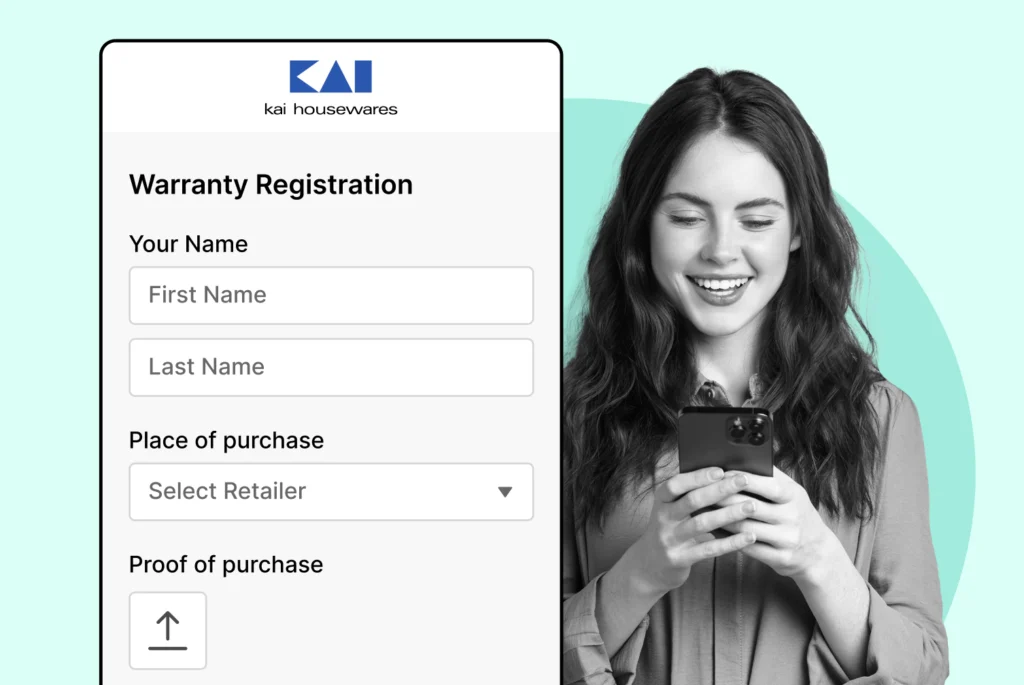
How to Automate Warranty Claims and Returns on Shopify
Simplify your warranty claims process with Shopify automation. Discover practical strategies to streamline and enhance efficiency!
Shipping, Tracking & Notifications
Boost customer experience and reduce support tickets
Realtime order and shipment tracking
Proactive order and shipping notifications
AI-Enhanced Discounted Labels
Predictive pre-purchase estimated delivery dates
Self-Serivce branded order tracking
Effortless experience delivered
Identify and Resolve Order Issues
Realtime order and shipment tracking
Make returns profitable and delight customers
Flexibility to define any return destinations & conditions
Simplify returns for your customers and team
Incentivize exchanges over returns
Returns management made easy for your team
Returns management made easy for your team
Easy claims and smart upsells
Understand why your customers are returning
In-Store & Curbside Pickup
Unify the online and the in-store experience
Hassle-free pickup experience for customers
In-Store dashboard to keep operations streamlined
In-Store and Online orders unified
Drive foot-traffic to your stores
Shipping, Tracking & Notifications
Boost customer experience and reduce support tickets
Realtime order and shipment tracking
Proactive order and shipping notifications
AI-Enhanced Discounted Labels
Predictive pre-purchase estimated delivery dates
Self-Serivce branded order tracking
Effortless experience delivered
Identify and Resolve Order Issues
Realtime order and shipment tracking
Make returns profitable and delight customers
Flexibility to define any return destinations & conditions
Simplify returns for your customers and team
Incentivize exchanges over returns
Returns management made easy for your team
Returns management made easy for your team
Understand why your customers are returning
In-Store & Curbside Pickup
Unify the online and the in-store experience
Hassle-free pickup experience for customers
In-Store Dashboard to keep operations streamlined
In-Store and Online orders unified
Drive foot-traffic to your stores
Boost customer experience and reduce support tickets
Realtime order and shipment tracking
Proactive order and shipping notifications
AI-Enhanced Discounted Labels
Predictive pre-purchase estimated delivery dates
Self-Serivce branded order tracking
Effortless experience delivered
Make returns profitable and delight customers
Flexibility to define any return destinations & conditions
Simplify returns for your customers and team
Incentivize exchanges over returns
Returns management made easy for your team
Equip your team for precise return checks.
Easy claims and smart upsells
Understand why your customers are returning
Unify the online and the in-store experience
Hassle-free pickup experience for customers
In-Store Dashboard to keep operations streamlined
In-Store and Online orders unified
Drive foot-traffic to your stores
Find the answer to all your questions
Take a step by step trip through our functionality to see how we can improve your ecommerce processes.
Explore the most comon questions about WeSupply
Calculate the ROI that WeSupply can bring you
Read actionable articles on how to optimize your post-purchase experience and decrease support tickets
Get inspired by stories of how our customers implemented an effortless post-purchase experience
Wondering if WeSupply is a good fit for you? Read through our use cases to see how we can help you increase conversion & improve CX!
A Deep Dive into Top Companies' Order Tracking & Returns Strategy
Find the answer to all your questions
Explore the most comon questions about WeSupply
Calculate the ROI that WeSupply can bring you
Request a no strings attached review of your current shopping experience and missed conversion opportunities
Take a step by step trip through our functionality to see how we can improve your ecommerce processes.
Read actionable articles on how to optimize your post-purchase experience and decrease support tickets
Get inspired by stories of how our customers implemented an effortless post-purchase experience
A Deep Dive into Top Companies' Order Tracking & Returns Strategy
Wondering if WeSupply is a good fit for you? Read through our use cases to see how we can help you increase conversion & improve CX!

In today’s fast-paced world of e commerce, customer expectations have evolved. Shoppers now demand seamless, on-demand solutions for everything—including warranty claims. Nobody wants to sit on hold or wait days for an email response. Instead, customers want control over their post-purchase experiences, particularly when it comes to warranty returns.
By offering a self-service warranty return experience, businesses can enhance customer satisfaction, reduce refund rates, and streamline operations. The advantages of self-service warranty returns in e commerce include greater efficiency, convenience, and cost savings for both customers and businesses, leading to improved customer satisfaction and operational efficiency. In this article, we’ll guide you through how to set up and optimize a self-service warranty return system, what tools you need, and how platforms like WeSupply, ReturnLogic, and Claimlane can help you get there.
Warranty returns are no longer a back-office function. They are now front and center in customer experience. A strong, automated warranty return process builds trust, improves retention, and reduces the burden on your customer service team. In fact, enabling customers to initiate and track warranty claims on their own has become a competitive advantage.
Whether you’re a small business or an enterprise brand, offering a convenient and efficient warranty process improves loyalty, increases repeat purchases, and positions your company as a customer-first operation. Companies that consistently deliver on their warranty promise build stronger customer relationships and long-term loyalty. If you want to stand out, it’s time to rethink the role of your warranty process.
Warranty claims occur when a customer believes a product has a manufacturing defect or performance issue and seeks a replacement, repair, or refund. While warranties vary based on product type and industry, the core idea is the same: reassurance that a product will work as promised.
In ecommerce, the challenge is magnified. Without physical stores, customers rely on digital touchpoints to resolve issues. That’s why it’s critical to understand how warranty claims are made and what your shoppers expect during the process. Delayed resolutions or complex procedures can lead to negative reviews and lost customers.
An optimized process starts with making claim submission intuitive and efficient. Rather than forcing customers to call or email support, a self-service warranty portal can empower them to upload documentation, describe the issue, and request a resolution—all from their desktop or mobile device. Typically, customers fill out an online form and provide proof of purchase or product defect as part of their return requests.
High return and refund rates can cripple profit margins. One defective item might be acceptable, but frequent returns and warranty claims can signal deeper issues—either in product quality or customer experience.
That’s why retailers are increasingly using warranties as a strategic tool to minimize refunds. By giving customers alternatives like exchanges or store credit, you reduce the financial hit of refunds while still resolving the issue. Offering an exchange instead of a refund helps preserve the original sale and maintain customer loyalty.
Extended warranties also help set expectations. If customers know they have long-term support, they’re less likely to initiate immediate returns and more likely to stay loyal to your brand. Self-service tools make these options visible and easy to select, cutting down on unnecessary customer service interactions.
Self-service returns are the backbone of today’s customer-first ecommerce strategies. A streamlined returns process makes making returns easier and more efficient for customers, improving convenience and satisfaction. They allow shoppers to handle issues at their convenience, without waiting on human support.
At the heart of this is the self-service warranty portal. This digital interface lets customers:
Start a warranty claim
Upload photos or receipts
Select their preferred resolution (repair, replacement, store credit)
Create and download a return label
Track claim status in real-time
A modern warranty portal also includes logic that routes requests automatically—for example, approving certain claims instantly if they meet pre-set rules. This speeds up the process and removes friction.
There are several platforms designed to handle warranty automation:
WeSupply integrates seamlessly with ecommerce platforms to offer return tracking, store credit, and warranty solutions.
ReturnLogic is ideal for brands on Shopify or BigCommerce looking to streamline warranty and return workflows.
Claimlane focuses on centralized collaboration between retailers and suppliers, and also facilitates communication between retailers, suppliers, and manufacturers for efficient warranty management.
Pick a platform that matches your tech stack and business needs. Look for flexibility, integrations, and customizable workflows. Consider platforms that support direct integration with manufacturers to streamline warranty management and claims processing.
Once you’ve selected a platform, build a workflow that routes claims automatically based on pre-defined rules. For example:
Auto-approve claims under a certain dollar amount
Flag claims with missing information for manual review
Route certain product types to specific resolution paths
Automation ensures speed and consistency, reducing pressure on your support team. It also minimizes manual logging and ensures every claim is automatically logged for tracking and analysis.
Make your portal easy to use, especially on mobile. Include:
Clear instructions
Visual progress bars
Tooltips for claim types
Image upload and live chat options
A simple, modern interface can drastically reduce abandonment and frustration. Tailoring the portal experience for different customers based on their purchase history or preferences—creating customers based segments—can further improve satisfaction.
Some products require more detailed claim processes. For instance, electronics might need serial numbers, while apparel may just need photos. Collecting serial numbers helps track defects and identify recurring product issues, making it easier to analyze warranty returns and improve quality control.
Set up your warranty portal to adjust dynamically based on the item type, helping you collect the right data the first time.
Connect your warranty system to order management, CRM, and inventory systems. This ensures accurate tracking and reduces data silos. Integration with inventory and order management systems also supports quality control by providing valuable data on warranty returns and product performance. Platforms like WeSupply make it easy to sync return status with customer profiles and fulfillment workflows.
Outsourcing warranty management can be a game-changer for retailers with limited in-house support. Third-party providers specialize in handling warranty workflows efficiently and accurately. These providers can manage entire warranty programs and quickly resolve warranty issues for retailers, streamlining the process and improving customer satisfaction.
They offer expertise, staffing, and tools you might not have internally. More importantly, they help scale your support without increasing your headcount.
Working with a third-party also allows you to focus on your core business—product development, marketing, and growth—while ensuring that your customers are still well cared for.
Even in a self-service model, label creation is a crucial touchpoint. Customers should be able to generate a return label instantly after submitting their claim. Automated shipping label creation streamlines the process, reduces delays, and helps customers ship their items back efficiently.
This eliminates the need for back-and-forth emails and ensures they ship the item quickly. You can offer options like:
Prepaid return labels
QR codes for drop-off at carrier locations
Eco-friendly or printerless return options
Box-free returns using QR codes or digital drop-off solutions, so customers don’t need to package items in a box
Make sure your support team is ready to step in for complex cases. Live chat, FAQs, and escalation paths should be built into the portal.
Expanding your warranty program to include extended warranty and store credit options can transform the way customers perceive your brand and interact with your business after a purchase. By offering an extended warranty, you not only reassure customers that their investment is protected, but you also demonstrate confidence in your products. This added layer of security can lead to higher customer satisfaction, fewer warranty claims, and increased customer loyalty—key drivers for repeat sales and long-term growth.
Store credit is another powerful tool for enhancing the customer experience. Instead of issuing a refund, providing store credits gives customers a reason to return and shop again, turning a potential loss into an opportunity for additional sales. Store credits are especially effective for businesses with a diverse product range or high-margin items, as they help retain revenue and keep customers engaged with your brand.
To successfully implement extended warranty and store credit options, consider these step-by-step instructions:
Determine the Terms of Your Extended WarrantyDefine what your extended warranty will cover, how long it will last, and any specific conditions that apply. Clear warranty terms help set customer expectations and reduce confusion during the claims process.
Set Pricing for Extended WarrantiesCalculate the cost of offering an extended warranty by analyzing expected claim rates, the cost of replacement products or repairs, and the potential impact on your bottom line. Pricing should reflect the value provided while remaining attractive to customers.
Develop a Streamlined Warranty Claim ProcessCreate a simple, user-friendly process for customers to submit warranty claims. Provide step-by-step instructions and ensure your support team is equipped to handle inquiries efficiently, reducing errors and saving time for both customers and staff.
Create and Track Store CreditsImplement a reliable system for issuing, tracking, and managing store credits. Make it easy for customers to redeem credits on future purchases, and set clear policies for expiration and usage to maintain transparency.
Train Your Support TeamEnsure your customer service team understands the details of your extended warranty and store credit programs. They should be able to clearly communicate the benefits, answer questions, and guide customers through the process for a better customer experience.
From an inventory management perspective, it’s important to:
Monitor Inventory Levels: Keep track of replacement products and parts to ensure you can fulfill warranty claims promptly.
Manage Inventory Costs: Balance the need for available stock with the costs of holding inventory, optimizing your processes to minimize waste and expense.
Streamline the Return Process: Design an efficient return process that quickly moves products through the system, reducing turnaround times and improving customer satisfaction.
By expanding your warranty program to include extended warranty and store credit options, your business can create a win-win scenario: customers feel valued and protected, while you benefit from increased loyalty, more sales, and a stronger position in the market. These enhancements not only lead to a great post-purchase experience but also help reduce errors, save time, and drive long-term success for your company.
Warranty claims are a goldmine of insight. They tell you what’s wrong with your products, how often issues occur, and which suppliers or batches are most problematic.
By analyzing claim data, you can:
Improve product design and manufacturing
Identify fraud or abuse patterns
Forecast spare parts needs
Adjust your return policies based on category trends
Analyze customer behavior to understand return patterns and improve future offerings
All this contributes to a better customer experience and lower operational costs. Additionally, root cause analysis of warranty returns data can help identify and address underlying product issues, leading to higher product quality and fewer returns.
Track metrics like:
Time to resolution
How quickly claims are processed
Claim approval rates
Most common return reasons
Products with the highest claim volumes
Use this data to refine your warranty policies, improve product listings, and align marketing promises with product capabilities. Over time, this reduces warranty claim volume and builds long-term brand trust. Additionally, analyzing costing data from warranty returns can help optimize operational efficiency.
Automation doesn’t mean impersonal. It’s important to balance efficiency with empathy.
Ensure your workflows still allow for human review when needed.
Train your support team to handle exceptions gracefully.
Keep your terms and conditions transparent.
Regularly audit your process to identify gaps or customer confusion.
With thoughtful implementation, even a fully automated process can feel personal and supportive. Automation can also help businesses save more money, retain more cash by efficiently managing warranty funds, and streamline pay flows for refunds and exchanges.
In today’s ecommerce landscape, offering self-service warranty returns isn’t just about convenience—it’s about creating a customer-first experience that drives loyalty, boosts revenue, and scales with your business.
With WeSupply, you can go far beyond basic returns. Our platform makes it easy to build a seamless self-service warranty process that empowers customers and reduces support burden—while unlocking valuable upsell opportunities and post-purchase engagement.
Whether you’re selling directly through your online store or via third-party retailers and marketplaces, WeSupply helps you identify real customers, personalize the experience, and create powerful brand connections—even after the sale.
Combat inconvenience with proactivity & self service
Book a quick call with our experts to see how WeSupply can help you make returns easy for your customers with a beautiful, self-service solution that makes their experience easier while also providing new ways to lower costs and earn back revenue.
Let customers submit warranty claims, upload receipts or photos, and choose their preferred resolution (repair, replacement, or store credit).
Generate instant return labels—including printerless and QR code options.
Use warranty registration and QR codes to onboard customers who purchased through Amazon, Walmart, or retail partners.
Capture names, emails, proof of purchase, and store location to personalize support and marketing.
Let customers upgrade from the standard warranty to 2- or 5-year coverage with accidental damage, free shipping, and fast replacements.
Promote high-margin accessories and relevant add-ons during or after a warranty claim.
Instantly approve low-risk claims with eligibility rules and intelligent routing.
Integrate with order, inventory, and CRM systems for end-to-end visibility.
Provide self-service content like how-to videos, care instructions, and product guides.
Reduce support tickets and returns with digital-first, always-available answers.
Analyze photo uploads and claim data to identify product defects and quality issues.
Optimize your reverse logistics process for smoother repairs, replacements, and returns.
Encourage verified customers to leave product reviews post-resolution.
Use service alerts to remind customers of maintenance check-ups—improving satisfaction and product longevity.
Whether you’re a fast-growing DTC brand or a seasoned retailer, WeSupply helps you turn warranty claims into an opportunity to build deeper relationships, collect actionable insights, and create automated, branded experiences that feel effortless to the customer.
✨ With WeSupply, warranty management becomes more than just damage control—it becomes a growth engine. Book a demo today!
Simplify Returns for Your Customers and Support Team
Book a quick call with our experts to see how WeSupply can help you: simplify the Return experience with just a few clicks, reduce customer service calls and manual processing, notify your customer about their refund, automate returns and reduce user error.
Self-service warranty returns aren’t just about convenience—they’re a game-changer for how ecommerce brands build trust and drive long-term value. In a digital-first world, customers expect fast, seamless solutions, and the brands that meet those expectations create a clear competitive edge.
WeSupply makes it easy to deliver that level of service by turning your warranty program into a scalable, customer-first experience. With features like automated claim approvals, real-time status tracking, and smart product registration using QR codes, you can simplify the process for both your team and your customers. Even if you’re selling through third-party retailers, WeSupply helps you identify end customers, personalize their experience, and build stronger post-purchase relationships.
Beyond just streamlining operations, WeSupply opens up new revenue opportunities through extended protection plans, product-specific upsells, and proactive service alerts. You can also reduce support costs by providing digital-first resources like how-to videos, while gaining valuable insights from warranty claim data to improve product quality and reduce return volume.
It’s time to stop thinking of warranty claims as a hassle—and start seeing them as a powerful driver of growth, retention, and satisfaction. With WeSupply, creating a smooth, self-service warranty experience is not only possible—it’s profitable.
1. How can I offer warranty returns without using a call center?
Use a self-service warranty portal where customers can submit claims, upload proof, and track status online. Tools like WeSupply automate the entire process.
2. What is the best way to automate warranty claims for ecommerce?
Use platforms like WeSupply or ReturnLogic to automate claim approval, label creation, and communication through rule-based workflows and real-time tracking.
3. Why should I offer self-service warranty returns?
Self-service warranty returns reduce support costs, improve customer satisfaction, and make the return experience faster and more convenient for shoppers.
4. How does WeSupply simplify self-service warranty returns for ecommerce brands?
WeSupply offers an intuitive portal where customers can submit claims, upload proof of purchase, generate return labels, and track status—all without contacting support. This automation reduces costs and boosts customer satisfaction.
5. Can WeSupply help identify customers who purchase from third-party marketplaces?
Yes. With QR code warranty registration, WeSupply helps you capture customer data directly, even if the purchase was through a third-party retailer. This enables personalized support, upsell offers, and extended protection plans.
6. How does WeSupply turn warranty claims into a revenue opportunity?
WeSupply lets you offer extended warranties, product-specific accessories, and service reminders during or after the claim process—boosting conversions while enhancing post-purchase engagement.
7. Does WeSupply have an Official Shopify App?
Yes. WeSupply has an Official Shopify App. You can download it and start integrating with your Shopify Store.
8. Does WeSupply have an official Magento extension?
Yes, WeSupply has an official extension for Magento. The WeSupply x Magento integration allows for automating order tracking experiences, reducing customer inquiries, automating shipping email and SMS notifications, and providing a fully branded order tracking experience
9. Does WeSupply have an official BigCommerce App?
Yes, WeSupply has an official BigCommerce App. You can integrate WeSupply with your BigCommerce store to improve your post-purchase customer experience.
Learn How To Create Successful Post Purchase Email Campaigns
Build an effective post-purchase email flow that helps you increase customer satisfaction and drive revenue growth!

Simplify your warranty claims process with Shopify automation. Discover practical strategies to streamline and enhance efficiency!

Learn effective strategies to calculate and reduce your ecommerce return rate. Improve profitability and customer satisfaction!

Discover the risks of incomplete data destruction and learn how to safeguard your information. Read on for essential insights to protect your data.

Master your online store with effective inventory management strategies. Learn practical tips and tools to streamline your Shopify operations. Read more!

Learn how to create a return shipping label in Shopify quickly and easily. Streamline your returns process—read the article for step-by-step guidance!

Streamline your returns process with USPS labels for improved efficiency. Learn how to simplify returns and enhance customer satisfaction!

Discover how to streamline UK and cross-border returns with effective strategies. Read our comprehensive guide for practical insights and solutions.

Craft a customer-friendly Shopify refund policy with our step-by-step guide. Enhance customer trust and streamline your returns process!

Discover strategies to enhance shopper buying confidence and drive sales effectively. Learn how to build trust with your customers!